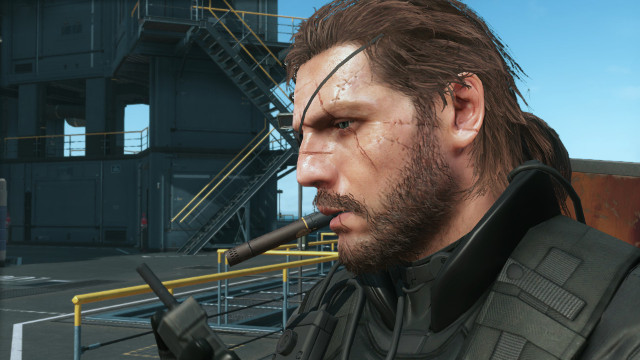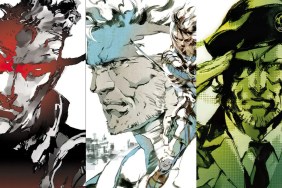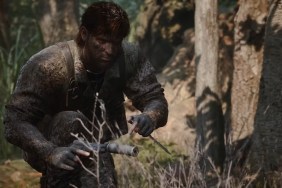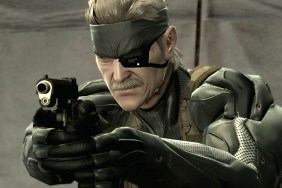To say that I'm a Metal Gear fan would be an understatement. I'm a grown adult with Metal Gear art on my wall. I've beaten every game in the series at least three times. Heck, my friends call me Big Boss due to my manic interest in the franchise. You might just find me stealthing around cosplaying as Big Boss with Vietnam-era camo and equipment.
A Forgettable Story
Prior to MGSV's release, I took for granted how much I admire Hideo Kojima's storytelling, even with all its insanity (i.e. nanomachines and "the arm"). Metal Gear Solid 4: Guns of the Patriots was certainly full of lengthy cutscenes, many of which were almost unbearably long. However, at the end of the game I felt as though I had been through an epic narrative. There were so many great moments that are impossible to forget, including the microwave hall and return to Shadow Moses. The truth is that while Metal Gear has always been long-winded, it's also been clever. That's extended beyond story elements to character design, with plenty of noteworthy antagonists encountered along the multi-decade journey.
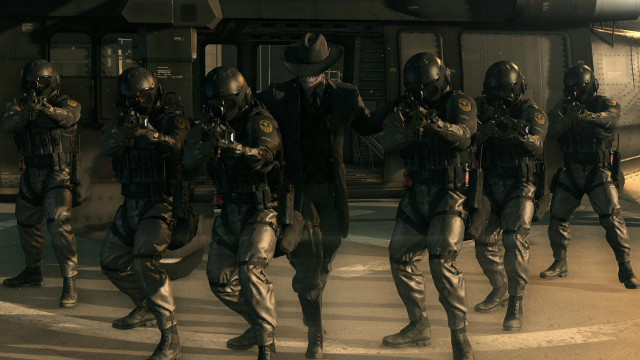
MGSV's story is, for the most part, uninteresting and all over the place. Skullface doesn't make for a compelling adversary, especially once his motives are revealed. Made worse, you spend most of your time doing menial tasks that have no grand importance, something that you just don't see in the four major installments of the franchise. It's almost as if Big Boss has all the time in the world on his hands and his friends don't mind sending him around to run errands.
When the final boss is taken down and the credits roll, even the most unknowledgeable Metal Gear player is left saying, "that's it?". Yes, that's it, unless you count the incomplete second chapter that follows.
Unexciting Boss Battles
When I think back to any of the four main Metal Gear Solid games, one of the qualities that sticks out the most is boss design. MGS's Psycho Mantis, MGS2's Fatman, MGS3's The End, and MGS4's Laughing Octopus all immediately spring to mind for their diverse mechanics and exciting gameplay.
In contrast, when I think back to my 50+ hours with MGSV, it takes me a few seconds to think of anything other than the final boss. Even then, the final boss is surprisingly simple at a gameplay level, with all the design efforts focused on presentation. You could argue that there is one solid boss encounter in the game, but unfortunately it's a rehash of experiences had in prior Metal Gear games.
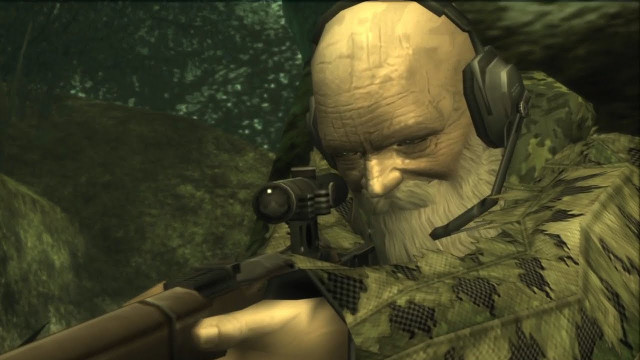
Many argue that MGSV's open-world nature made it much more difficult for Kojima Productions to introduce compelling boss design. While that may be true to some degree, there was nothing stopping Kojima from leading the player into a confined area similar to previous games for the encounters before returning to the open-world. There's no good excuse for how it is, and as a result the standard gameplay is left to pick up the slack.
A Dry Open World
In a lot of ways, MGSV's two open world maps (Afghanistan and Africa) aren't all that interesting. While they offer a large, beautiful area to move around, they are lightly populated with activities. Those activities are, for the most part, limited to breaking into enemy installations.
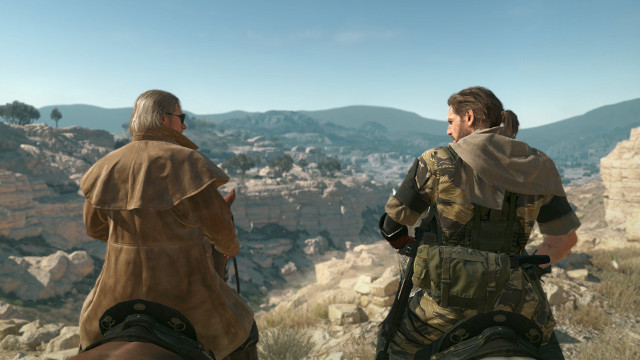
It wouldn't be so bad if there were random events around the world, and secrets to explore. Or, maybe it could have had a presence of civilians that provide a layer of interaction. Instead, there are a limited number of side-stories and encounters to engage in, and its variety is derived from its Buddy system and diverse equipment library. What's here is very one-dimensional, especially when compared to the recent The Witcher 3: Wild Hunt.
Equipped with only two map styles and many repeated buildings and towers, level design becomes repetitive early on. Once I hit Chapter 2 and I was tasked with revisiting locales, my interest deteriorated at a rapid rate. This is a Metal Gear game that few will ever run through more than once.
Missing Pieces
It's become clear that Hideo Kojima needed at least another year to work on MGSV to make it the epic finale that he envisioned. Unfortunately, Konami didn't want to fund more development time, and therefore incomplete content had to be pushed to the side. Remnants of this have been peppered all over the game experience as well as the data files. There are areas shown in pre-release media that aren't in the game, there's a significant cutscene that was outright stripped from the title, and Chapter 2 feels like a complete mess.
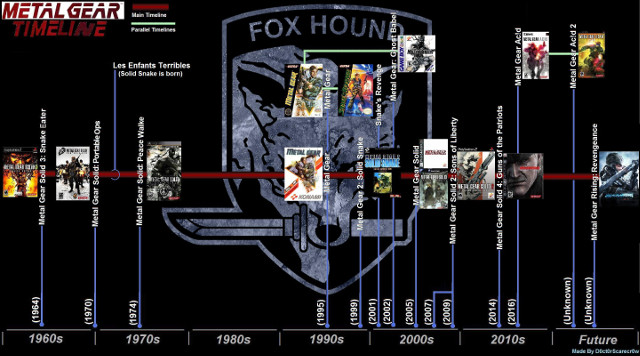
The biggest disappointment is that MGSV fails to accomplish what it set out to do from a story perspective. It's set in a time period between the events of MGS: Peace Walker and Metal Gear, one that produces a wealth of discussion among fans for its lack of information. There was a tremendous amount of potential squandered as MGSV raises more questions than it answers.
The Debrief
When I think back to the pre-release hype of MGSV I find a few problems. For one, Kojima showed way too much of the game in pre-release trailers, to a point where there wasn't much surprise left for the game, and some content was shown that didn't make it into the final product. Additionally, I can't help but firmly believe that the MGSV pre-release review boot camp was shady. I respect others' opinions, but I have difficulty understanding how the game received so many perfect reviews when it suffers from as many shortcomings as it does, especially given its significance for the Metal Gear franchise.
MGSV has some great qualities that make it a game deserving of respect, especially when it comes to minute-to-minute gameplay. Unfortunately, despite being by far the most expensive MGSV to make, and Kojima's last piece of the timeline puzzle, its disappointing qualities don't leave a good lasting impression.
Top 10 Weirdest Story Elements in Metal Gear Solid
Top 10 Wierd and Outrageous Story Elements in the Metal Gear Solid Series
-
Mr. Hot Coldman\'s Peace Walker Kills Itself
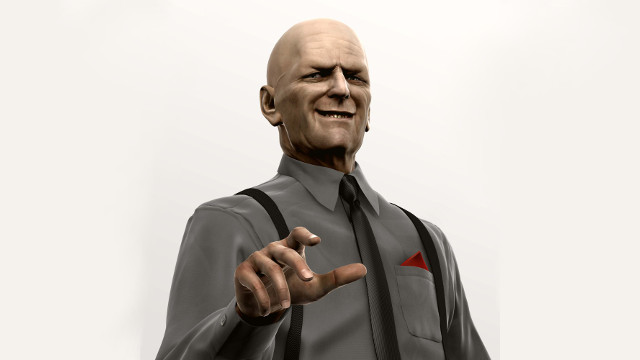
During Metal Gear Solid: Peace Walker Big Boss learns that CIA Station Chief Hot Coldman—yes, that's his name—worked together with Dr. Strangelove to make a nuclear metal gear equipped with The Boss' A.I. Called Peace Walker, it was a remarkably dangerous creation that was made specifically to return nuclear fire in the event of an offensive attack.
rn
rnSoon after its deployment, Peace Walker is mistakenly given order to return nuclear fire. A moment before the A.I. fires its ICBM, potentially summoning nuclear war, The Boss' A.I. comes alive and forces the Peace Walker to drown itself in Lake Nicaragua. The event is shown as a reawakening of the legendary The Boss and her anti-war philosophy. -
Johnny Sasaki the Diarrhea Expert
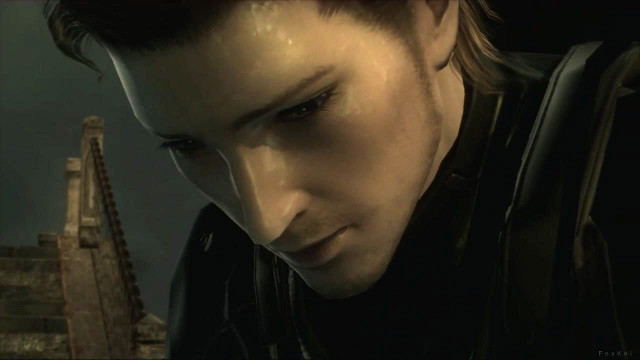
Since the original Metal Gear Solid there's been a recurring appearance of a character who battles with bowel issues. Known as Johnny Sasaki, his first appearance was in Metal Gear Solid where he guarded the cell of Solid Snake. He would leave his post after experiencing a rush of diarrhea, opening up an opportunity for Snake to hide himself and escape. His name was only encountered later in the credits upon finishing the game.
rn
rnIn Metal Gear Solid 2 Johnny wasn't physically encountered, and instead made a cameo when the player was provided a directional microphone to detect Richard Ames' pacemaker. Johnny's bowel movements could be heard through the wall during this sequence.
rn
rnMetal Gear Solid: Snake Eater continued the ridiculousness as Johnny's Russian grandfather was met by Big Boss following his capture. To no surprise, he similarly battled diarrhea while guarding a cell block.
rn
rnIn Metal Gear Solid 4 Johnny Sasaki was not only made into a major character, but his face was seen for the first time ever. Solid Snake encounters Johnny while he's having a bowel movement under the disguise of a barrel. Interestingly enough, Johnny would fight alongside Solid Snake during the game, and eventually marry Meryl Silverburgh leaving the audience in pure disbelief. -
Illuminati Censorship
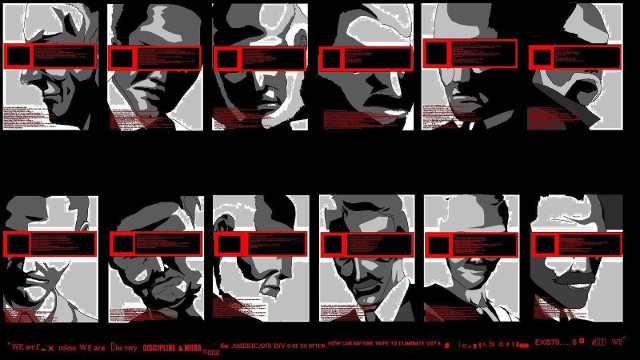
Throughout the Metal Gear Solid series a powerful organization comprised of wealthy individuals is mentioned. This world-controlling organization is made mysterious, bearing striking resemblance to what people in our real-world refer to as The Illuminati. It isn't until Metal Gear Solid 4 that the organization is featured front and center stage. rn rnDuring the course of Metal Gear Solid 4, the player regularly hears mention of a group with an obscure name. It turns out that when this name is heard, the person speaking is actually saying "The Patriots", the official name of the organization. However, thanks to nanomachine censorship, this is translated to "La-li-lu-le-lo" during communication. rn rnThe Patriots would later be revealed to be the support group of Metal Gear Solid: Snake Eater including Sigint, Para-Medic, and Major Zero, once again reinforcing that Hideo Kojima likes to correlate everything in the franchise no matter how insane it is. -
MGS2 Simulation Reveal
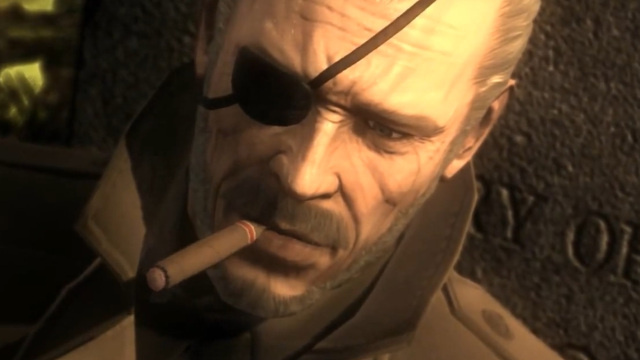
Big Boss' appearance at the end of Metal Gear Solid 4 was arguably unnecessary. What isn't arguable is how ridiculous the things he had to say were.
rn
rnDuring his 10+ minute speech to Solid Snake in a graveyard, Big Boss would state that many of the events of Metal Gear Solid 2 were just a simulation and never actually took place. He would go on to explain that an A.I. created by Major Zero would try to assume control of the world, crafting alternate universes in the process. For those who didn't like Metal Gear Solid 2, it was a redeeming revelation. For everyone else, it was silly beyond belief. -
Nanomachines Explain Everything
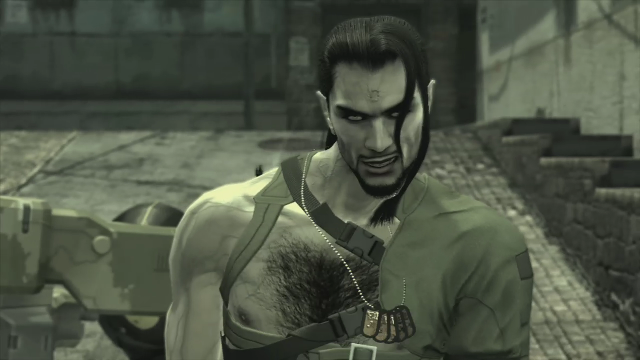
Metal Gear Solid has employed various supernatural elements over the years. Given the series' commitment to a realistic world, these elements always stood out as something bizarre but explainable through natural means.
rn
rnFor example, in Metal Gear Solid 4 Solid Snake would encounter an antagonist named Vamp, an ex-member of Dead Cell capable of running on walls at blazing speed, and even standing on water. He would even recover from significant wounds out of nowhere, making him seemingly invincible.
rn
rnVamp, along with a large library of other supernatural elements in the series, would later be explained as the product of nanomachines, microscopic machines that would dwell in the bloodstream of individuals. It was such a ridiculous turn of events that it has remained common joke among gamers when discussing game elements that have no logical explanation. -
Quadruple Agents
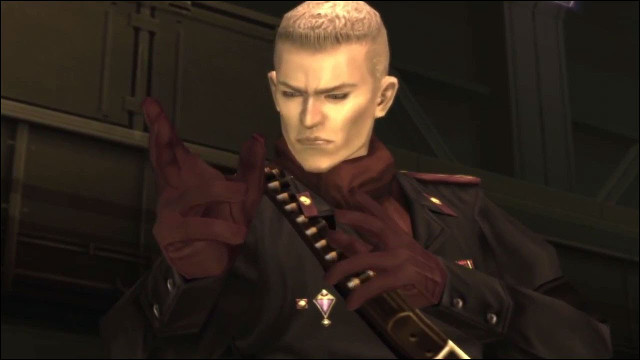
Undercover operations were an extremely important part of Metal Gear Solid: Snake Eater's storytelling. For one, The Boss' undercover defection from the U.S. to the Soviet Union was a major plot element, but it went much further from that.
rn
rnIt's revealed later into the story that Revolver Ocelot is a U.S. Agent who is, similar to The Boss, now working with the Soviet Union. However, he shows moments of being a double agent as he works in the Soviet Union's favor. Shortly after, he becomes a triple agent, and then eventually a quadruple agent. It's all a mess of complexity that ultimately does the iconic character a disservice.
rn
rnTo make matters worse, another character named Eva was similarly an undercover agent. Her motives are explained much more directly, but it's hard to dismiss the fact that Metal Gear Solid: Snake Eater is overflowing with undercover agents. -
The Arm
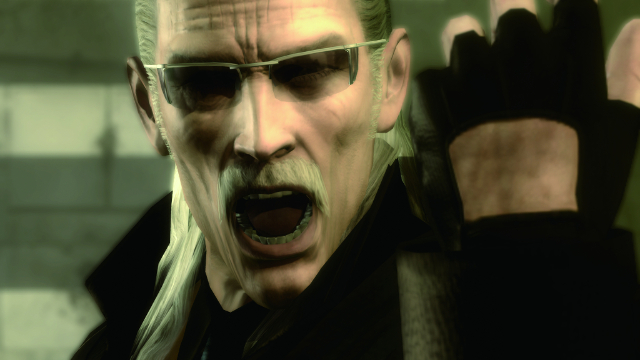
There is, simply put, nothing as controversial as Liquid Snake's arm. Chopped off during battle, the arm was soon transplanted onto the one and only Revolver Ocelot. Throughout Metal Gear Solid 4 Revolver Ocelot is shown behaving remarkably similar to Liquid Snake, explained as nanomachines in the arm taking over Ocelot's body. It's a far-fetched explanation that confused many players. rn rnHowever, the story makes a quick left turn out of nowhere and reveals that Ocelot was never controlled by the arm, but rather Ocelot hypnotized himself to behave and sound like Liquid Snake. Supposedly, he did this in order to fool The Patriots into thinking he was actually controlled by Liquid Snake. If you can't make sense of it, then you aren't alone. This single piece of the story is considered by many Metal Gear fans to be the worst plot element in the series' over 28 years of history. -
Paz\'s Nether Parts Bomb
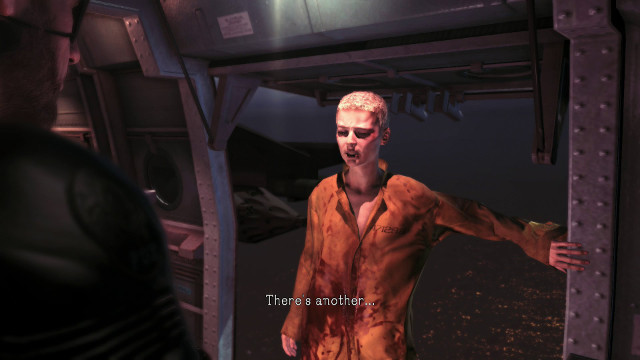
The story behind what Paz endured at the hands of Skullface prior to the events of Metal Gear Solid V: Ground Zeroes was already way over the top. To give you an idea, she was apparently gangraped and beaten, among other things that could be regarded as worse.
rn
rnAt the end of Metal Gear Solid V: Ground Zeroes she is rescued by Big Boss in a dangerous mission. Members on-board the escape helicopter quickly learn that she has a bomb in her abdomen. It is surgically removed before detonation, saving the crew. However, she soon reveals that there is another bomb, inferring that it's inside her private parts. She jumps out of the helicopter just in-time for the nether parts bomb not to cause instant-death to Big Boss and his team. However, the helicopter crashes due to structural damage, trigger the beginning of Big Boss' multi-year coma. -
MGS3\'s Supernatural Bosses
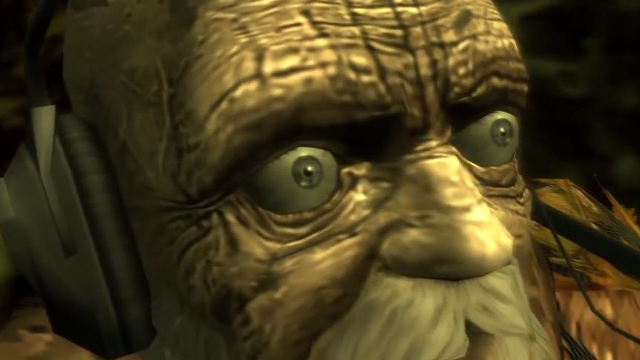
Metal Gear Solid: Snake Eater's boss cast is regarded as one of the most consistently interesting in gaming history. However, that doesn't mean that their design is founded in reality. rn rnAmong the group of antagonists you have a guy who can control bees, another who produces electricity at will, a ghost, and an over 100 year old man who is better with a sniper rifle than anyone else in the world. It's got to be those nanomachines. -
Visible Codec Conversations
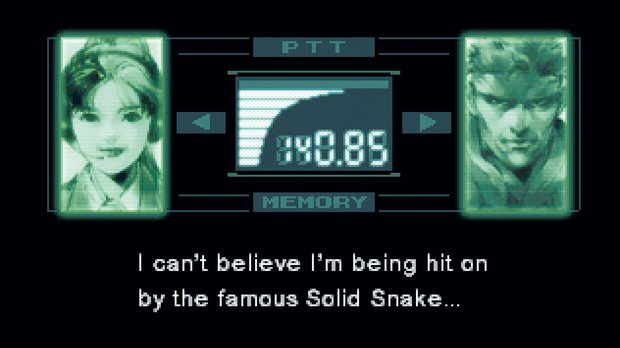
Codec conversations have been an important element of Metal Gear since its inception. In Metal Gear Solid 4 Liquid Snake demonstrates that people can see each other through the system when he changes costume to fool Solid Snake. Given that codec is supposed to be radio communication through an ear piece, it makes absolutely no sense.
